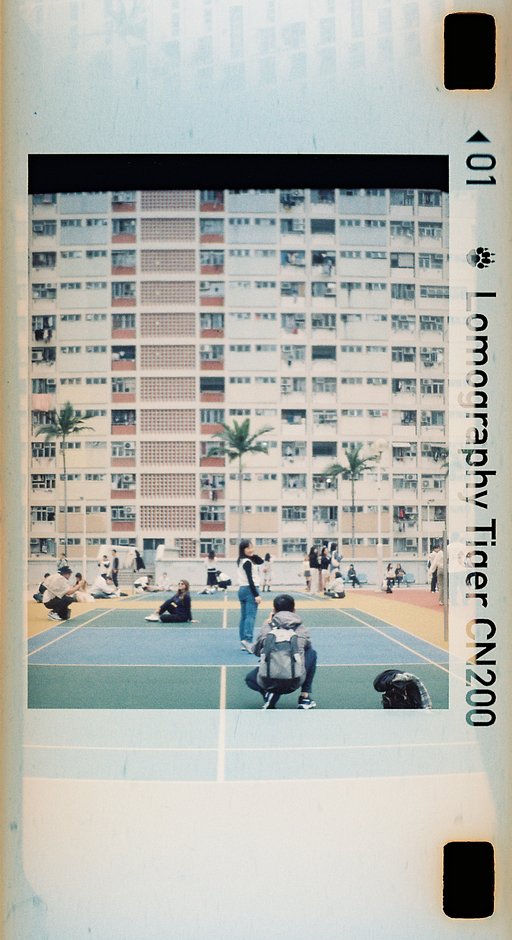Shooting Wisely with 120: Format Choice
12 30 Share TweetConcerned about the cost of medium format photography? How about the number of exposures per roll? Let me ease your worries.
Stop and think: what is film, really? It’s a special plastic with a light reactive chemical coating. Have you ever cut plastic with scissors? You can make all sorts of shapes with it. Essentially, that’s all a film format is. It’s plastic cut to a specific size. This is a simple view, but it’s true. The truth is, though, film format means 2 things: the size and shape of the roll or cassette of film, and how much of the film on the roll or in the cassette you are exposing at once. For 35mm, there are 2 main formats: full frame, which is 24mmx36mm in size, and half frame, which is usually 18mmx24mm in size. of course, Lomography’s Diana Mini and LC-Wide have a special square 24mmx24mm format. However, since rolls of medium format film are much taller, you end up with more options. This choice is ultimately important to getting the most out of your medium format films. I’ll include a couple of examples in each format under the paragraph. Important: 120 film is backed in paper all the way across, 220 film is not backed in paper and is twice as long.
6×4.5: Starting with the smallest common medium format exposure size, we have 6×4.5. All of the names indicate a size in centimeters instead of millimeters, so it’s an exposure 60mmx45mm. This is almost double the size of a full frame 35mm exposure, so even then you’ll immediately see an increase in resolution. Resolution is essentially the quality of the detail in the photo at a certain printed size. The main attractions of this format is high number of exposures, about 15 on a roll of 120 film and 30 on 220 film, the smaller size of professional cameras in this format, and the general lower price of cameras in this format. Examples of cameras in this format are the Fuji GS645 series of rangefinders, Mamiya 645 and Bronica 546 SLRs, Lomography Diana F+, and Holga 120-series.

6×6: Probably the most well known format on Lomography because the Diana F+ and Holga 120-series can cover up to 6×6 and are often shot that way, although I included them in the last group because they can be masked down to shoot 6×4.5 photos. Almost all TLRs and many SLRs in medium format shoot 6×6, so in general it’s a very popular format. It allows 12 photos on 120 film and 24 on 220 film. It is popular because it is present in so many important, historic, and technically excellent cameras, gives you a medium-high number of exposures, allows for high resolution than 6×4.5, and also allows for a large-but-compact camera. Popular cameras in this format includes the Diana F+, Holga 120-series, Mamiya 6 rangefinder, Hasselblad SLRs, Pentacon 6, Yashica TLRs, Mamiya C TLRs, and Rollei TLRs. this is also the smallest format on the new Belair X 6-12 camera. Important note: while square modes on Lomography 35mm cameras are smaller than a normal exposure, 6×6 is larger and thus has a higher resolution than the basic exposure.
6×7: Again, you get added resolution (although the factor isn’t as great as between 6×6 and 6×4.5. 6×7 cameras take a rectangular photo like 6×4.5. The major benefit of 6×7 is that it enlarges to fit 8×10 print paper perfectly. This is a great format for anyone who likes to do their own print enlarging and developing. 6×7 gives you 10 frames on 120 film and 21 on 220 film. The only downside is the equipment for 6×7 can start to become large and heavy, but if you don’t mind that, 6×7 might be a better choice for you than 6×6. Popular 6×7 cameras are the Mamiya 7, Mamiya Press series (6×9 backs are also common), Mamiya RB and RZ67, Pentax 6×7, and Fuji GW670 series.
6×9: This is the format that’s most like 35mm, as 24mmx36mm multiplied by two is about the same. For those who need extremely high resolution and don’t mind a rather sparse and heavy group of choices, plus those that like the dimensions of 35mm, this is the format for you. 6×9 can fit 8 shots on 120 film and 18 on 220 film. A lot of older folding cameras use this format, as well as the Mamiya Press system, the Fuji GW690 system, and the new Lomography Belair X 6-12.
6×12: This is the most common panoramic format. One can shoot 6 120 exposures or 12 220 exposures in this format. Cameras in this format exclusively are hard to come by. Many people use special backs on 4×5 large format cameras, or special models such as the Linhoff Technorama 612, Hroseman SW612, or Noblex PRO 150 UX. Also, more Lomographic options include the Holga 120WPC, the Holga 120PAN, and the Belair X 6-12.
I hope this article was comprehensive and understandable. Basically, choose your format based on your budget, your shots per roll preference, your equipment size preference, and your desired resolution.
written by nation_of_pomation on 2012-11-30 #gear #tutorials #medium-format #camera #tutorial #tipster #select-type-of-tipster #select-what-this-tipster-is-about #6x4-5-6x6-6x7-6x9-6x12-120-220



























12 Comments